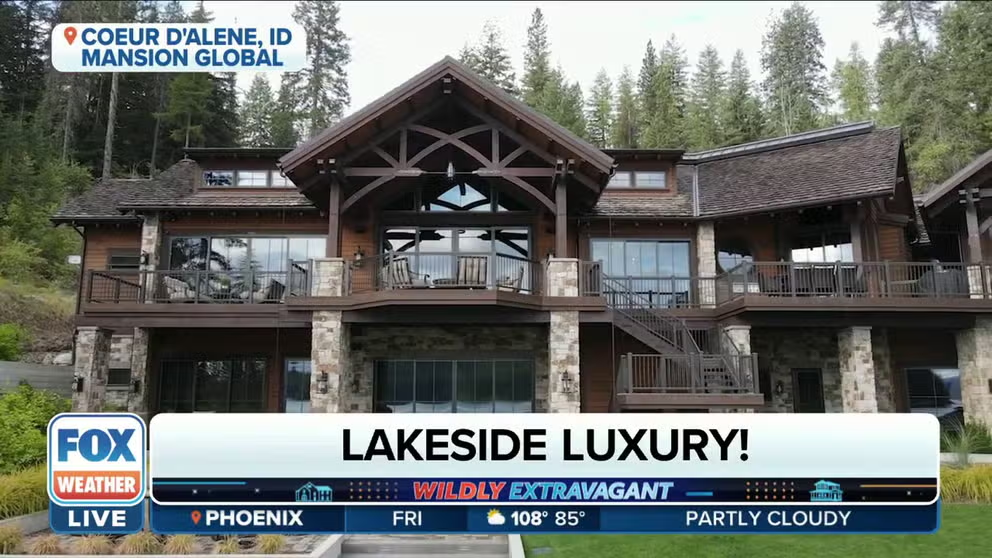Top 10 most expensive places to live in US all have this in common
Do you live in the top 25 most expensive places to live in the U.S.? U.S. News just released the 2023-24 list
Real estate and weather come together in new FOX Business show
‘Mansion Global’ host Kacie McDonnell shares with FOX Weather gorgeous properties designed for every season.
Looking at the U.S. News' 25 most expensive places to live in 2023-24, FOX Weather found a trend: Mild and consistent weather.
Eleven of the 25 were in California. Only seven of the 25 have four true seasons. Most had small annual temperature swings.
"These cities require the most wealth to live comfortably," wrote U.S. News.
ONE OF AMERICA'S COLDEST CITIES NAMED COUNTRY'S BEST PLACE TO LIVE

File this 15-bath Beverly Hills mansion was on the market for $85 million in 2014.
(Patrick T. Fallon/Bloomberg / Getty Images)
Analysts looked at median gross rent and annual housing costs for mortgage-paying homeowners across metro areas and the number of renters versus owners. Costs include utilities, taxes and goods. Number crunchers compared those numbers to the national average and average annual income levels to award a value score.
The national average housing cost is $383,883.
Taking into account everything from FEMA's National Risk Index to crime rates and commutes to air quality, they assessed quality of life. Both scores together netted the overall score.
San Diego, Los Angeles and Honolulu came in one, two and three with residents more than willing to pay the "sunshine tax."
FOX Weather took a closer look at the weather and the U.S. News analyst commentary. Climate data came from the NWS and the National Climactic Data Center. The first city with four seasons was New York, coming in at 11.
Most expensive places to live, according to U.S. News:
1. San Diego
San Diego is known for its sunny days, temperate climate and tons of outdoor activities.
- Winter: Averages 5.8 inches of rain, 65.0 degrees high temperature and 49.3 low
- Spring: Averages 2.39 inches of rain, 67.3 degrees high temperature and 56.0 low
- Summer: Averages 0.14 inches of rain, 74 degrees high temperature and 64.6 low.
- Fall: Averages 1.41 inches of rain, 72.6 degrees high temperature and 60.0 low
OVER 80% OF HOMEBUYERS FACTOR EXTREME WEATHER, CLIMATE RISK INTO DECISION, SURVEY FINDS
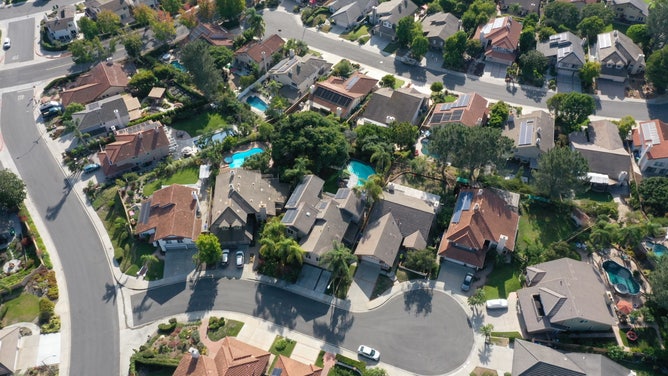
Single-family in a San Diego neighborhood in 2020.
(Bing Guan/Bloomberg / Getty Images)
"Living in San Diego is not particularly affordable. Home prices are considerably higher than the national median sale price," wrote U.S. News. "San Diegans are willing to pay these elevated prices, though, often referring to the cost-of-living differences as the "sunshine tax," or the price of enjoying a year-round temperate climate."
2. Los Angeles
"Los Angeles climate is categorized as Mediterranean," wrote NOAA scientists. "This climate type is characterized by pronounced seasonal changes in rainfall - a dry summer and a rainy winter - but relatively modest transitions in temperature."
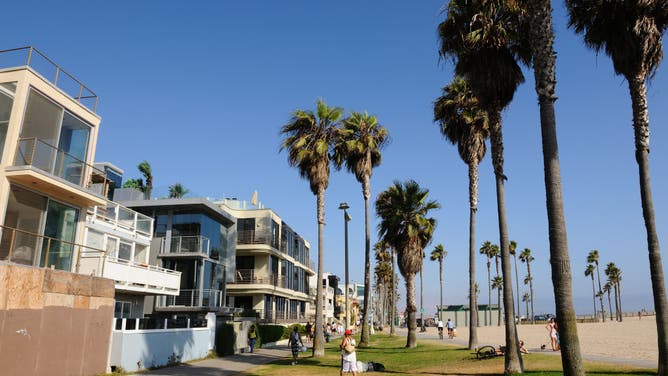
Beach front houses on Venice Beach in Los Angeles in 2016 in Los Angeles.
( Frédéric Soltan/Corbis / Getty Images)
- Winter: Averages: 8.8 inches of rain, 64.6 degrees high temperature and 49.3 low
- Spring: Averages 1.7 inches of rain, 66.0 degrees high temperature and 54.3 low
- Summer: Averages 0.12 inches of rain, 73.3 degrees high temperature and 62.6 low
- Fall: Averages 1.42 inches of rain, 72.0 degrees high temperature and 58.3 low
3. Honolulu
While in the tropics, the Koppen Climate Classification System puts Honolulu in the Hot, Semi-Desert category.
HERE ARE THE 10 BEST PLACES TO LIVE IN THE US IF YOU HAVE SEASONAL ALLERGIES
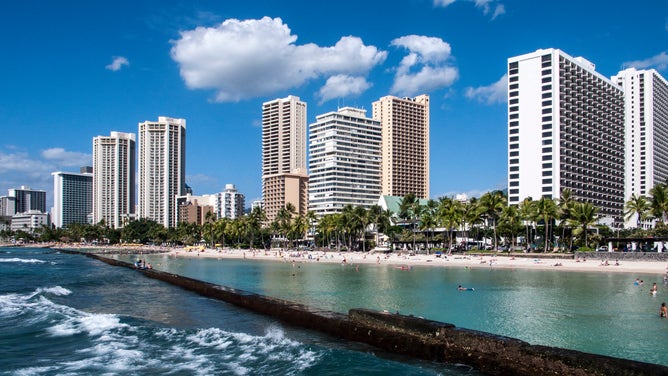
File: High rises along Waikiki Beach in Honolulu.
(Andrew Woodley/Universal Images Group / Getty Images)
"The outstanding features of Hawaii's climate include mild temperatures throughout the year, moderate humidity, persistence of northeasterly trade winds, significant differences in rainfall within short distances, and infrequent severe storms," stated the NWS. "For most of Hawaii, there are only two seasons: "summer," between May and October, and "winter," between October and April."
- Winter: Averages 5.9 inches of rain, 80.3 degrees high temperature and 66.6 low
- Spring: Averages 3.95 inches of rain, 83.0 degrees high temperature and 69.3 low
- Summer: Averages 1.86 inches of rain, 88.0 degrees high temperature and 74.3 low
- Fall: Averages 4.64 inches of rain, 86.6 degrees high temperature and 72.6 low
4. Miami
"Residents of Miami bask in warm, sunny weather year-round, though occasional rainstorms, flooding and hurricanes are a concern," wrote U.S. News.
WHERE ARE THE BEST PLACES TO RETIRE IN THE US?

File: Homes at Rivo Alto Island in Miami Beach in 2023.
(Eva Marie Uzcategui/Bloomberg / Getty Images)
The city is officially in the Tropical Savannah climate zone with a dry winter.
- Winter: Averages 6.42 inches of rain, 77.3 degrees high temperature and 66.6 low
- Spring: Averages 12.4 inches of rain, 83.3 degrees high temperature and 68.6 low
- Summer: Averages 27.45 inches of rain, 90.6 degrees high temperature and 76.6 low
- Fall: Averages 21.4 inches of rain, 85.6 degrees high temperature and 72.6 low
5. Santa Barbara, California
"It has been described as the ‘American Riviera,’ a ‘playground for the rich and famous’ and, quite simply, ‘paradise,’" wrote U.S. News. "Santa Barbara, California, enjoys a nearly perfect year-round climate, making it ideal for outdoor activities and drawing tourists worldwide."
DO YOU LIVE IN THE HAPPIEST STATE IN AMERICA?
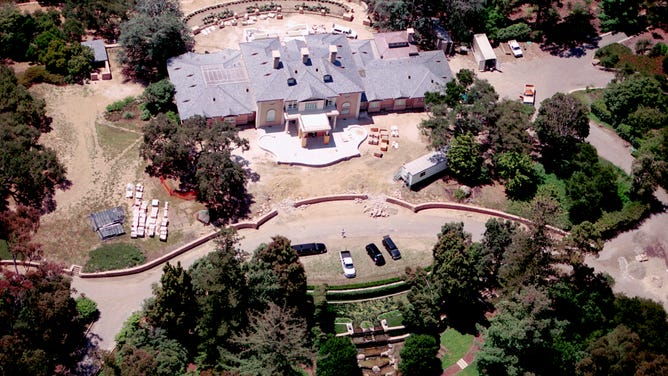
File: An aerial view of Oprah Winfrey's home as seen from the air in 2001 in Montecito, California near Santa Barbara.
(Jason Kirk / Getty Images)
- Winter: Averages 10.61 inches of rain, 64.1 degrees high temperature and 41.7 low
- Spring: Averages 4.43 inches of rain, 67.6 degrees high temperature and 48.5 low
- Summer: Averages 0.14 inches of rain, 72.7 degrees high temperature and 56.8 low
- Fall: Averages 2.07 inches of rain, 72.3 degrees high temperature and 50.3 low
"With its unique east-west coastline and south-facing beaches, Santa Barbara enjoys a moderate climate," the publication continued. "However, in late spring and summer, the city experiences ‘June gloom,’ when weather patterns create fog that sweeps in from the ocean, making mornings and early afternoons gray and dreary until it fizzles out late in the day."
6. San Francisco
San Francisco is also a Mediterranean climate, temperate with dry, warm summers.
"The rumors of fog are true, but San Francisco isn't always draped in a humid haze," wrote U.S. News. "For the most part, the weather is consistently pleasant, allowing for San Franciscans to spend time outdoors throughout the year."
HOW A TROPICAL PARADISE IS HOME TO THE RAINIEST SPOT IN THE NATION
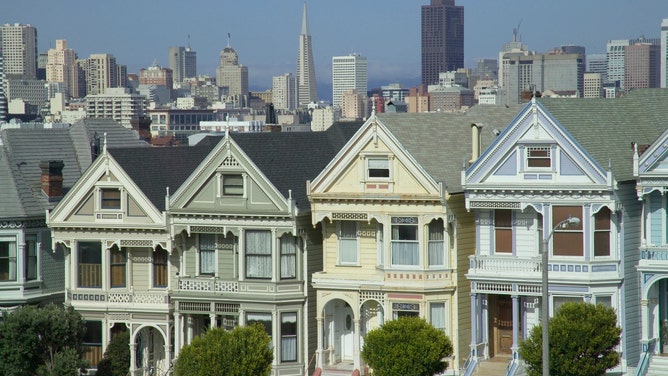
File: San Francisco's iconic Painted Ladies.
(DEA / GIANNI OLIVA / Getty Images)
- Winter: Averages 11.99 inches of rain, 57.6 degrees high temperature and 45.0 low
- Spring: Averages 2.90 inches of rain, 65.0 degrees high temperature and 49.6 low
- Summer: Averages 0.18 inches of rain, 72.0 degrees high temperature and 55.0 low
- Fall: Averages 2.40 inches of rain, 69.0 degrees high temperature and 52.6 low
7. Salinas, California
Salinas is also in the Mediterranean climate zone with cool, wet winters and warm, dry summers.
"Cool onshore coastal breezes push fresh Pacific air from the coast to the inland areas," writes U.S. News. "Those same breezes are responsible for Salinas' mild Mediterranean climate, which stays at comfortable temperatures year-round."
DO YOU HAVE FLOOD INSURANCE? DO YOU NEED IT?
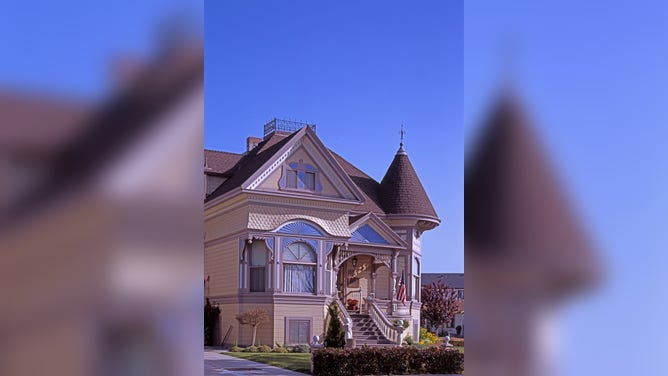
File: John Steinbeck once lived in this Salinas home.
(Dukas/Universal Images Group)
- Winter: Averages 8.99 inches of rain, 63.0 degrees high temperature and 41.0 low
- Spring: Averages 4.10 inches of rain, 67.0 degrees high temperature and 45.7 low
- Summer: Averages 0.13 inches of rain, 71.1 degrees high temperature and 52.9 low
- Fall: Averages 2.25 inches of rain, 72.2 degrees high temperature and 48.2 low
"Salinas, California, promotes itself as the ‘Salad Bowl of the World’ as a tribute to the area's colossal farming business that produces lettuce, tomatoes, peppers, strawberries, broccoli, grapes for wine, and flowers," wrote U.S. News.
"The region's high cost of living is mainly driven by real estate prices, which are about twice the national median home sale price," the publication continued. "However, home prices in Salinas are more affordable by California standards, particularly when compared to nearby coastal towns like Monterey, Pacific Grove and Carmel, not to mention the Silicon Valley."
8. Santa Rosa, California
Santa Rosa joins Salinas and San Francisco in the Mediterranean zone.
"Summers in Santa Rosa are hot and dry while winters are cool, gray, wet and either foggy or rainy," said U.S. News. "In the spring, wildflowers of all colors bloom along the roads, especially on the rural west side of the metro area."
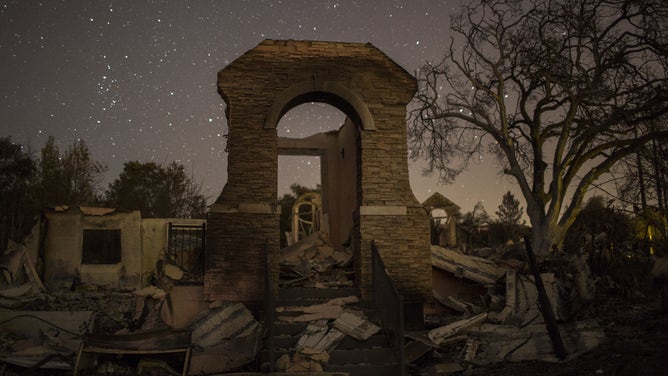
FILE: Several Santa Rosa communities have had to be rebuilt in the past decade after destructive wildfires.
(David McNew / Getty Images)
- Winter: Averages 20.10 inches of rain, 57.6 degrees high temperature and 37.3 low
- Spring: Averages 7.53 inches of rain, 69.0 degrees high temperature and 43.3 low
- Summer: Averages 0.74 inches of rain, 82.3 degrees high temperature and 51.0 low
- Fall: Averages 5.36 inches of rain, 74.3 degrees high temperature and 44.6 low
9. San Juan, Puerto Rico
San Juan falls into the ‘Tropical Monsoon’ classification.
"Sea breezes keep the heat at bay," said U.S. News. "Hurricanes are always a possibility when living in the Caribbean, as the stormy season lasts from June 1 to Nov. 30. The island will sometimes experience hurricanes, large amounts of rain and flooding."
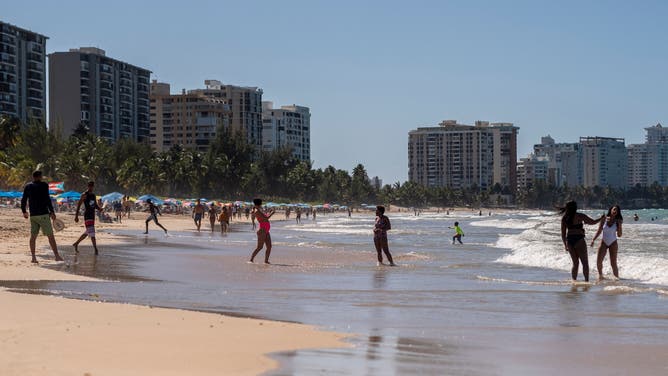
FILE: A beach in San Juan.
(RICARDO ARDUENGO/AFP / Getty Images)
- Winter: Averages 11.50 inches of rain, 83.6 degrees high temperature and 72.3 low
- Spring: Averages 12.32 inches of rain, 86.3 degrees high temperature and 74.3 low
- Summer: Averages 16.97 inches of rain, 89.0 degrees high temperature and 78.0 low
- Fall: Averages 19.08 inches of rain, 89.0 degrees high temperature and 78.0 low
10. Fairfield, California
Fairfield and Vallejo share the same climate classification as San Diego, defined by warm, dry summer days and cool nights. Winters are mild to cool and wet.
"Two California cities 18 miles apart, Fairfield and Vallejo have become the great escape for San Franciscans and other Bay Area residents fleeing high costs of housing," said U.S. News.
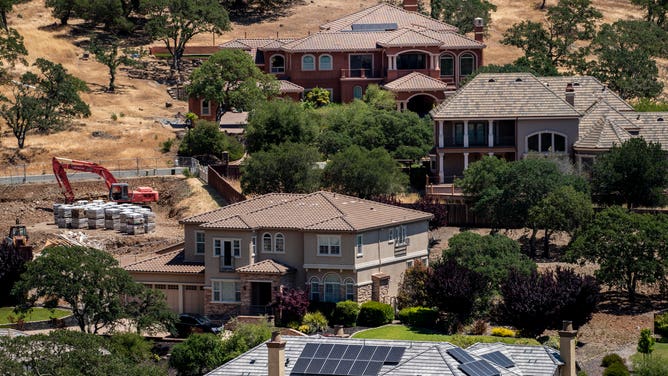
File: The Green Valley neighborhood in Fairfield.
(Melina Mara/The Washington Post / Getty Images)
- Winter: Averages 15.05 inches of rain, 58.3 degrees high temperature and 41.1 low
- Spring: Averages 5.52 inches of rain, 71.8 degrees high temperature and 51.3 low
- Summer: Averages 0.22 inches of rain, 88.0 degrees high temperature and 57.3 low
- Fall: Averages 3.74 inches of rain, 76.9 degrees high temperature and 51.3 low
"Vallejo rarely gets the San Francisco-like fog or the searing 100 degree heat of north Solano County and Sacramento. September is the warmest month in Vallejo," continued U.S. News. "Fairfield is typically five to 10 degrees warmer than Vallejo on any given day. The most pleasant months in Fairfield are October, May and April. July is the hottest month. Snow in Fairfield is extremely rare."
11. New York
New York is in the humid, subtropical climate zone.
"New York City has four distinct seasons. Every spring, you'll see flowers growing in area parks, and every summer, you'll see people enjoying the sun on the High Line," wrote U.S. News. "Autumn brings with it cooler temperatures and the new theater season. Winters are legendary, with the occasional nor'easter passing through and dumping several inches of snow, which often brings the region to a standstill."
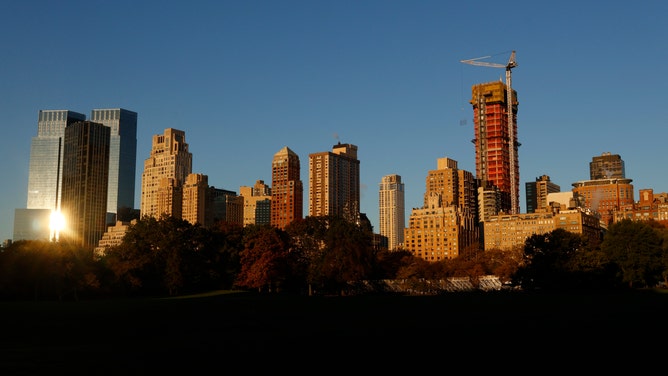
File: 50 West 66th Street, a 69-story residential skyscraper that will become the tallest building on the Upper West Side when finished rises above Central Park as the sun rises on October 29, 2023, in New York City.
( Gary Hershorn)
- Winter: Averages 11.6 inches of rain and snow water equivalent, 23.8 inches of snow, 42.0 degrees high temperature and 30.4 low
- Spring: Averages 12.34 inches of rain and snow water equivalent, 5.4 inches of snow, 61.0 degrees high temperature and 40.7 low
- Summer: Averages 13.7 inches of rain, 79.5 degrees high temperature and 63.5 low
- Fall: Averages 12.27 inches of rain and snow water equivalent, 0.6 inches of snow, 62.2 degrees high temperature and 40.7 low
